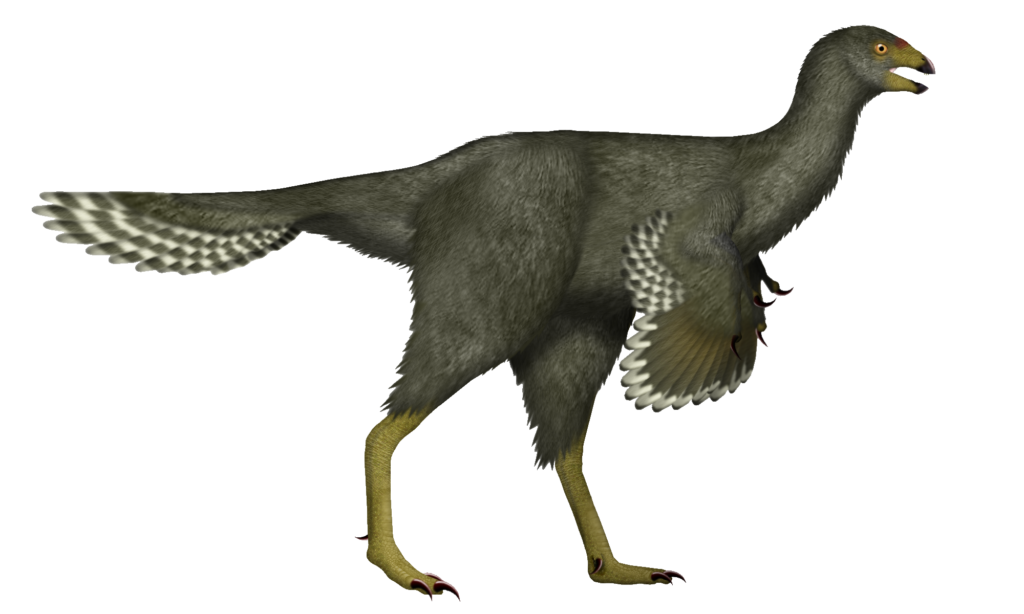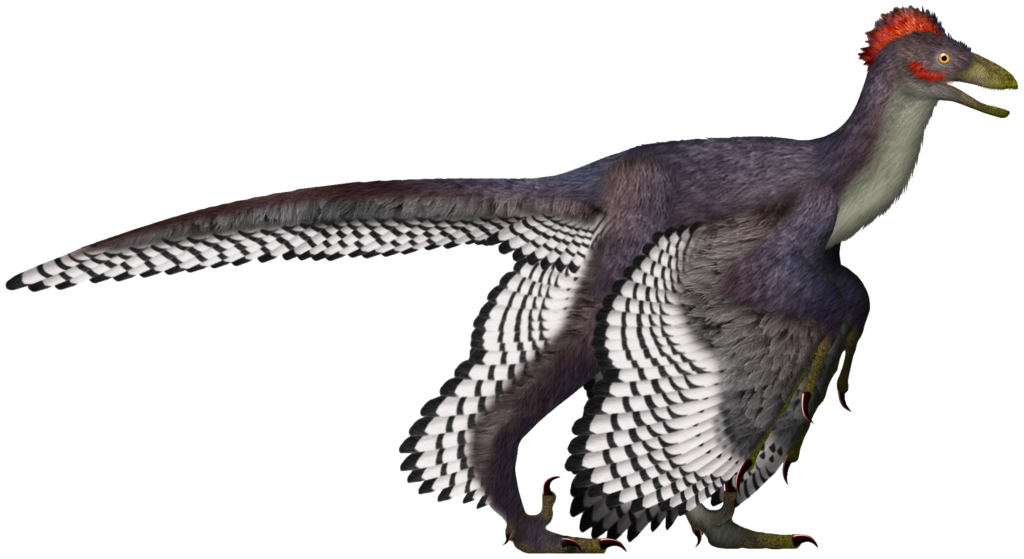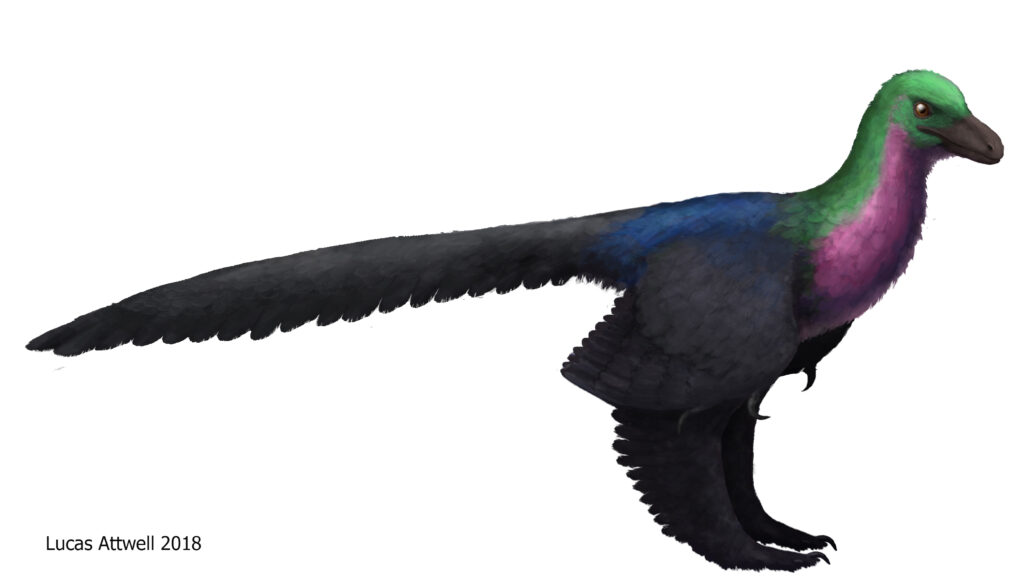The discovery that some dinosaurs possessed feathers revolutionized our understanding of these magnificent prehistoric creatures. This revelation not only transformed how we visualize dinosaurs but also strengthened the evolutionary link between dinosaurs and modern birds. However, not all dinosaurs sported feathery coverings – some retained scales throughout their evolutionary history. This dichotomy presents one of paleontology’s most fascinating puzzles. What factors determined whether a dinosaur lineage developed feathers or remained scaled? Scientists have proposed numerous theories to explain this selective feathering, drawing on evidence from fossils, evolutionary biology, and ecological considerations. Let’s explore the leading theories about why feathers appeared in some dinosaur groups while others remained featherless throughout their 165-million-year reign.
The Evolutionary Timeline of Feathers

Feathers didn’t appear suddenly in the dinosaur lineage but evolved gradually over millions of years. The earliest proto-feathers likely emerged during the Late Triassic or Early Jurassic period, roughly 200 million years ago, appearing as simple filamentous structures rather than the complex feathers we see in modern birds. These primitive structures first evolved in theropod dinosaurs, the group that includes famous predators like Tyrannosaurus and Velociraptor, as well as the direct ancestors of birds. Fossil evidence suggests that feathers evolved through several distinct stages, from simple filaments to more complex branched structures, and finally to the asymmetrical flight feathers seen in modern birds. This evolutionary timeline helps explain why certain dinosaur lineages that diverged early, before feathers evolved, never developed them at all, while later theropod groups displayed increasingly sophisticated feathery coverings.
Thermoregulation as a Primary Driver

One of the most widely accepted theories for feather evolution centers on thermoregulation – the ability to maintain optimal body temperature. Smaller dinosaurs, particularly theropods, likely faced challenges in conserving body heat due to their higher surface-area-to-volume ratio. For these animals, developing an insulating layer of proto-feathers would have provided significant advantages in retaining body heat, especially during cooler periods or at night. Larger dinosaurs, in contrast, faced the opposite problem of heat retention. Massive sauropods and larger ornithischians, with their lower surface-area-to-volume ratios, needed to dissipate heat rather than conserve it, making scales more advantageous than insulating feathers. This thermoregulatory theory helps explain why we typically find evidence of feathers in smaller, more active dinosaurs, while larger ones remained primarily scaled throughout their evolution.
Phylogenetic Constraints and Inheritance

The presence or absence of feathers follows clear phylogenetic patterns across dinosaur lineages. Feathers appear to have originated within the theropod dinosaur group, specifically among coelurosaurs, and became increasingly elaborate in the lineages closest to birds. This distribution suggests that once feathers evolved in a particular dinosaur lineage, they were typically inherited by all descendants unless specifically selected against. Sauropods and ornithischians, having diverged from theropods before feathers evolved, never possessed the genetic foundation for feather development. These phylogenetic constraints created a situation where some dinosaur groups had the potential to develop feathers, while others simply lacked the genetic architecture necessary for feather growth. The phylogenetic pattern of feather distribution aligns consistently with the dinosaur family tree, strongly supporting the idea that inheritance played a crucial role in determining which dinosaurs developed feathers.
Ecological Niches and Lifestyle Adaptations

The ecological niches occupied by different dinosaur species likely influenced whether feathers proved advantageous or disadvantageous. Smaller predatory dinosaurs that relied on speed and agility might have benefited from the aerodynamic properties of feathers, even before true flight evolved. Fossils suggest that some dinosaurs used feathered limbs for improved balance when running, for additional lift when jumping, or for increased maneuverability during hunting. In contrast, heavily armored dinosaurs like ankylosaurs or ceratopsians evolved alternative defensive strategies that didn’t rely on speed or agility, making feathers less advantageous. Similarly, the massive herbivorous sauropods relied on their enormous size for protection rather than speed, further reducing any potential benefit from feathers. These divergent ecological adaptations help explain why feathers became concentrated in certain dinosaur lineages while remaining absent in others.
The Role of Body Size in Feather Distribution

A striking pattern emerges when examining the relationship between dinosaur body size and feather presence: Smaller dinosaurs were much more likely to possess feathers than larger ones. This correlation appears consistent across multiple dinosaur lineages and periods. Even within feathered groups like theropods, the largest species, such as adult Tyrannosaurus rex, likely had reduced feather coverage compared to their smaller relatives or juveniles. Several factors might explain this size-related pattern. Smaller dinosaurs faced greater challenges in thermoregulation, making insulating feathers particularly beneficial. Additionally, the square-cube law dictates that as animals grow larger, their volume increases more rapidly than their surface area, changing their thermal properties and reducing the need for insulation. The metabolic costs of producing and maintaining feathers across a larger body surface may have also selected against feather retention in giant dinosaurs, creating an evolutionary pressure to reduce or eliminate feather coverage as body size increased.
Display and Social Signaling Functions

Fossil evidence increasingly suggests that dinosaur feathers served important communication and social signaling functions beyond any practical physical benefits. Spectacularly preserved fossils reveal that some dinosaurs possessed colorful, iridescent feathers arranged in patterns that would have been highly visible to contemporaries. These elaborate feather displays likely played crucial roles in mate attraction, species recognition, intimidation displays, and establishing social hierarchies. For dinosaurs that relied heavily on visual communication within complex social structures, feathers provided an evolutionary canvas for developing elaborate visual signals. Dinosaur groups that evolved alternative forms of social signaling, perhaps through horns, frills, or distinctive body shapes, might have had less evolutionary pressure to develop feathers for display purposes. This theory helps explain why certain dinosaur lineages developed increasingly elaborate feather structures while others maintained simple scales throughout their evolution.
Predator-Prey Interactions and Camouflage

The predator-prey dynamics of different dinosaur species likely influenced their integumentary covering, with feathers potentially providing significant camouflage advantages in certain environments. Smaller predatory dinosaurs hunting in forested or complex environments might have benefited from the disruptive patterning that feathers could provide, breaking up their outline and making them less visible to potential prey. Similarly, smaller dinosaurs vulnerable to predation could use feathered camouflage to avoid detection. Microscopic structures in preserved dinosaur feathers indicate that some species possessed countershading patterns similar to those seen in modern animals, with darker coloration above and lighter below to reduce the appearance of shadows. Dinosaurs that relied on other defensive strategies, such as armor plating, herding behavior, or sheer size, would have had less evolutionary pressure to develop feathered camouflage, potentially explaining why certain lineages remained scaled while others developed increasingly sophisticated feather patterns.
Environmental and Climate Influences

Paleoclimate evidence suggests that global temperatures and environments influenced which dinosaur lineages developed feathers. During cooler periods in Earth’s history, the insulating properties of feathers would have provided greater advantages, potentially accelerating feather evolution in vulnerable dinosaur groups. Some researchers propose that certain dinosaur lineages developed feathers in response to specific climate events or when expanding into cooler habitat ranges. The distribution of feathered dinosaur fossils shows interesting geographic patterns, with more feathered specimens discovered in temperate paleoenvironments than in tropical ones. Modern analogies support this theory, as mammal species in colder environments typically possess denser fur than their relatives in warmer regions. These climate influences likely interacted with other factors like body size and metabolism to determine whether feathers provided a net advantage for specific dinosaur lineages in their particular environmental context.
Metabolic Differences Between Dinosaur Groups

Mounting evidence suggests that dinosaurs exhibited a range of metabolic rates, from ectothermic (cold-blooded) to endothermic (warm-blooded) physiology, which significantly influenced their need for insulation. Theropod dinosaurs, particularly smaller species in the lineages closest to birds, likely possessed higher metabolic rates approaching or reaching true endothermy. These higher-metabolism dinosaurs would have generated more internal heat, creating evolutionary pressure to develop insulation like feathers to retain that valuable heat energy. Larger dinosaur groups like sauropods may have utilized gigantothermy—maintaining stable body temperatures through sheer mass—rather than high metabolic rates, reducing their need for insulating coverings. The correlation between dinosaur groups thought to have higher metabolic rates and the presence of feathers provides compelling support for this metabolic theory. Oxygen isotope studies of dinosaur bones and growth rate analyses further suggest metabolic differences between dinosaur lineages that align with patterns of feather distribution.
The Relationship Between Scales and Feathers

Recent developmental biology research has revolutionized our understanding of the relationship between scales and feathers, revealing that they share deep evolutionary connections. Both structures develop from the same fundamental skin appendages, with relatively minor genetic changes potentially transforming one into the other. This developmental plasticity means that the transition between scaled and feathered ancestors might have occurred relatively quickly in evolutionary terms when conditions favored such changes. Some dinosaurs show evidence of possessing both scales and feathers on different body regions, demonstrating that these structures could coexist within the same animal. The famous Kulindadromeus from Siberia, for instance, possessed scales on its tail and lower legs but feather-like structures on other parts of its body. This suggests that the presence or absence of feathers wasn’t necessarily an all-or-nothing proposition but could vary across body regions according to functional needs, creating complex integumentary patterns across dinosaur species.
Sexual Selection and Dimorphism

Sexual selection likely played a significant role in the evolution and distribution of feathers across dinosaur species. Just as in many modern birds, dinosaurs may have developed elaborate feather displays primarily to attract mates rather than for practical physical benefits. Evidence suggests that some feathered dinosaurs possessed distinctly colored or structured feathers that would have served a limited practical purpose but could have been highly effective in courtship displays. Sexual dimorphism—physical differences between males and females—may have included differences in feather coverage, coloration, or structure, with one sex (typically males) developing more elaborate displays. Dinosaur groups with different reproductive strategies or mating systems might have experienced different levels of sexual selection pressure on visual displays, potentially explaining why some lineages developed increasingly elaborate feathers while others retained simpler integumentary coverings. The concentration of the most elaborate feather structures in dinosaur lineages closest to birds supports this sexual selection hypothesis, as modern birds show some of the strongest sexual selection patterns in the animal kingdom.
Recent Discoveries Changing Our Understanding

The rapidly evolving field of dinosaur paleontology continues to uncover new evidence that reshapes our understanding of feather distribution among dinosaurs. Recent discoveries like the feathered ornithischian Kulindadromeus have challenged the previously held notion that feathers were exclusive to theropod dinosaurs, suggesting that feather-like structures may have evolved independently in multiple dinosaur lineages or originated even earlier in dinosaur evolution than previously thought. Advanced imaging techniques applied to amber-preserved specimens have revealed unprecedented details about dinosaur feather structure and coloration, including iridescent feathers with preservation of melanosomes (pigment-containing structures). New fossil discoveries from previously unexplored regions like northern China, Siberia, and Brazil continue to fill crucial gaps in our understanding of feather evolution and distribution. These ongoing discoveries remind us that our understanding remains incomplete, with each new find potentially revising our theories about why certain dinosaurs developed feathers while others remained scaled throughout their evolutionary history.
Implications for Understanding Bird Evolution

The selective distribution of feathers among dinosaurs provides critical insights into the evolutionary pathway that ultimately produced modern birds. By studying which dinosaurs had feathers, which didn’t, and the pattern of increasing feather complexity in certain lineages, scientists can trace the gradual transformation from reptilian dinosaurs to avian dinosaurs (birds). The concentration of the most sophisticated feather structures in the dinosaur groups most closely related to birds strongly supports the now-established theory that birds evolved directly from small, feathered theropod dinosaurs. This evolutionary continuum challenges the traditional dichotomy between “birds” and “dinosaurs,” as modern birds are living theropod dinosaurs that retained and further specialized features like feathers that originated in their dinosaurian ancestors. Understanding why feathers appeared in certain dinosaur lineages while others remained scaled helps clarify the selective pressures that ultimately produced the remarkable diversity of feathered adaptations seen in modern birds, from the insulating down of penguins to the aerodynamic flight feathers of eagles and the spectacular display plumage of peacocks.
Conclusion

In conclusion, the selective distribution of feathers among dinosaur species reflects a complex interplay of evolutionary history, physical constraints, ecological adaptations, and environmental factors. No single theory fully explains this pattern – rather, multiple influences likely determined whether feathers provided net advantages for specific dinosaur lineages. The presence of feathers, primarily in smaller theropod dinosaurs, especially those most closely related to birds, reveals how these structures initially evolved for functions like insulation and display before eventually enabling powered flight in birds. As paleontologists continue uncovering new fossils and applying advanced analytical techniques, our understanding of dinosaur feather evolution continues to deepen. What remains clear is that feathers represent one of evolution’s most versatile innovations – structures that began perhaps as simple insulation in early dinosaurs and ultimately enabled one dinosaur lineage to conquer the skies, surviving the extinction event that claimed their non-avian relatives 66 million years ago.




